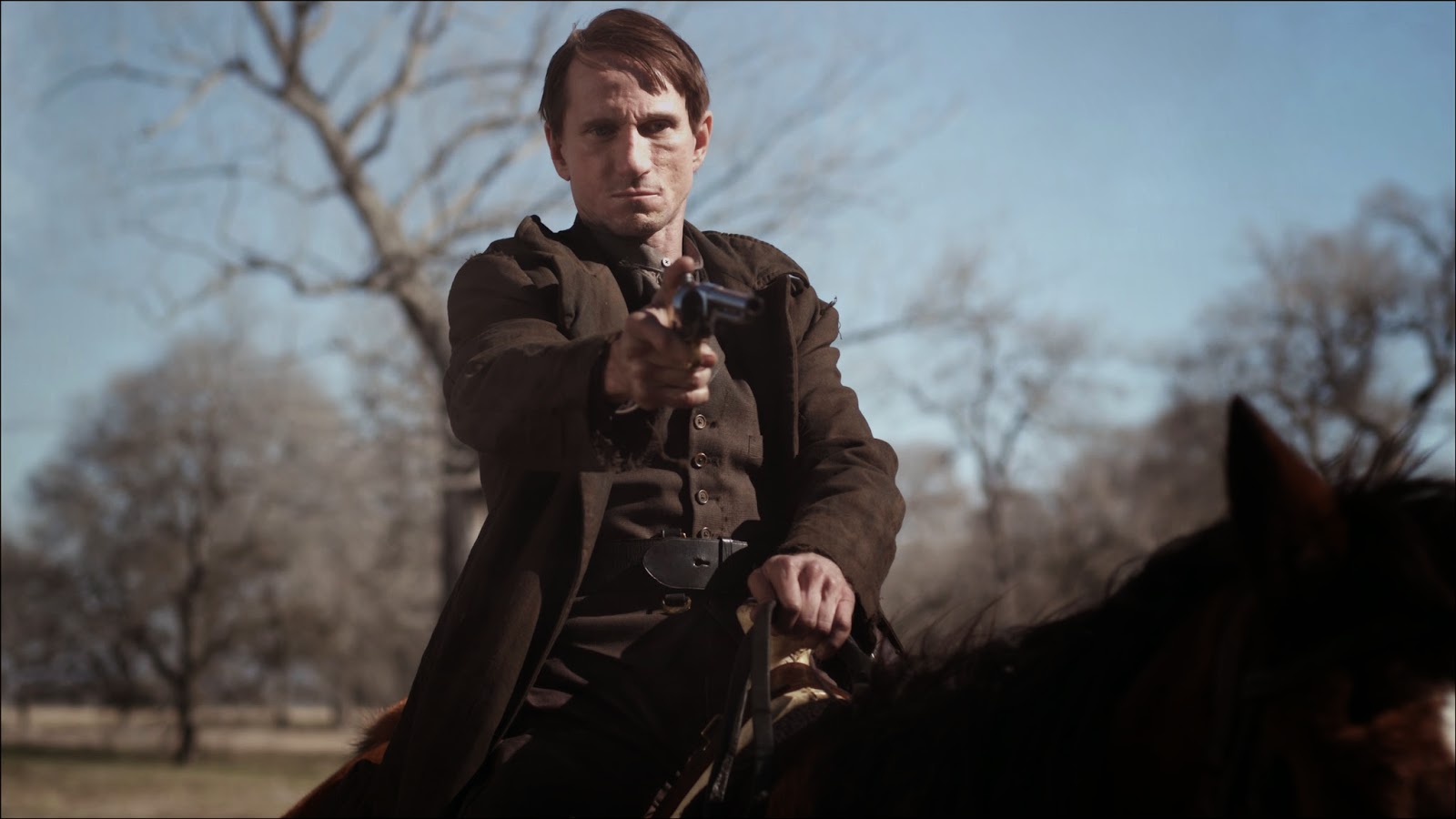Some seven years have passed since writer/director/editor Chris Eska gave us his quietly wondrous August Evening. That's a long time to wait for his next full-length feature, but at last it is upon us. THE RETRIEVAL, set in 1864 during the Civil War, it is all about betrayal -- of a specifically nasty sort. The film, along with (though not as good as) 12 Years a Slave, makes another fine bookend about the history of slavery here in the USA. It also points up the difference between a genuine, small-budget, indepen-dent movie and one like 12 Years, that is estimated to have had a budget of twenty million. Eska's film probably cost not even one-tenth of that. (A blockbuster like The Avengers -- boasting a budget of $220,000,000 -- ran up finances of more than ten times what McQueen's canny movie cost.)
The film's initial scene is quietly shocking, as what appears a runaway slave of teenage years is given shelter in the barn of a nearby house by a white woman with a rifle. And then.... What happens, asks Mr. Eska (shown at right), who also wrote, edited and directed this new film, when blacks are used to entrap their own kind? This will bring to mind Holocaust tales of a century later, such as those of Benjamin Murmelstein in Claude Lanzmann's recent documentary, along with other Jews who betrayed their own kind for money, or possible safety, or simply out of necessity during the Second World War.
All three of these reasons come into play during the course of The Retrieval, as the teenager, Will (Ashton Sanders, above, right), and Marcus, the adult with whom he works (Keston John, above, left) do the bidding of some very nasty bounty hunters, led by Burrell (Bill Oberst Jr., shown below).
Unlike the earlier August Evening, an everyday-life character study almost perfectly realized, The Retrieval -- because it has to do with a life-and-death situation in which to earn money and be allowed to live, these two must find and betray another man named Nate (played by the exceptional Tishuan Scott, below) -- is filled with suspense and moral choice. "What if he was you?" asks the boy of his older compatriot. "Well, he ain't," comes back the immediate reply. So much for morality.
The question that haunts the movie, almost from its inception, is how stifled is our boy Will by the importance of money over kindness, friendship and trust. The war, while never in the center of things, is also never far away. Death, when it comes, is surprising and swift, leaving Will, in a sense, in the care of Nate. A father/son bond develops, but that nagging question -- is it fear or money that's pushing Will's button? -- crops up throughout.
This is part of the problem with Eska's film, and it is never resolved properly. Why does Will wait -- and wait and wait -- to warn Nate of what lies ahead? Perhaps Eska wanted to wring maximum suspense from the situation, but his handling of simple plot mechanics beggars belief. There are any number of opportunities along the way for a decisive chat, none of which are taken until, of course, it's too late.
This ensures the finale Eska must have wanted but it creates a pre-determined outcome that is far too heavy-handed. Certain details seem out of place, too: houses look too modern for the setting, and much is made of a footfall and a twig snapping to give away the presence of an outsider. A few moments later two horses are led away without any worries about the much louder sounds that they might make.
One must commend Eska on his willingness to struggle with the idea of the Social Contract and how it applies to this time and these people. The performances are excellent, as well -- every last one of them. But finally, the film seems too simple, given the gravity of the situation at hand.
The Retrieval, after making its theatrical debut in Atlanta two weeks ago, will open this Wednesday, April 2, in New York City at Film Forum, after which it will play Houston, Austin, Chicago and Los Angeles. Click here to see all currently scheduled playdates, cities, and theaters.
Note: filmmaker Chris Eska with actors Tishaun Scott,
Keston John & Christine Horn (who gives
an excellent performance as Nate's woman) will appear on Wednesday,
April 2, at the 7:45 show, on Friday, April 4, at the 7:45 show,
and on Saturday, April 5, at the 3:15 show.

























































